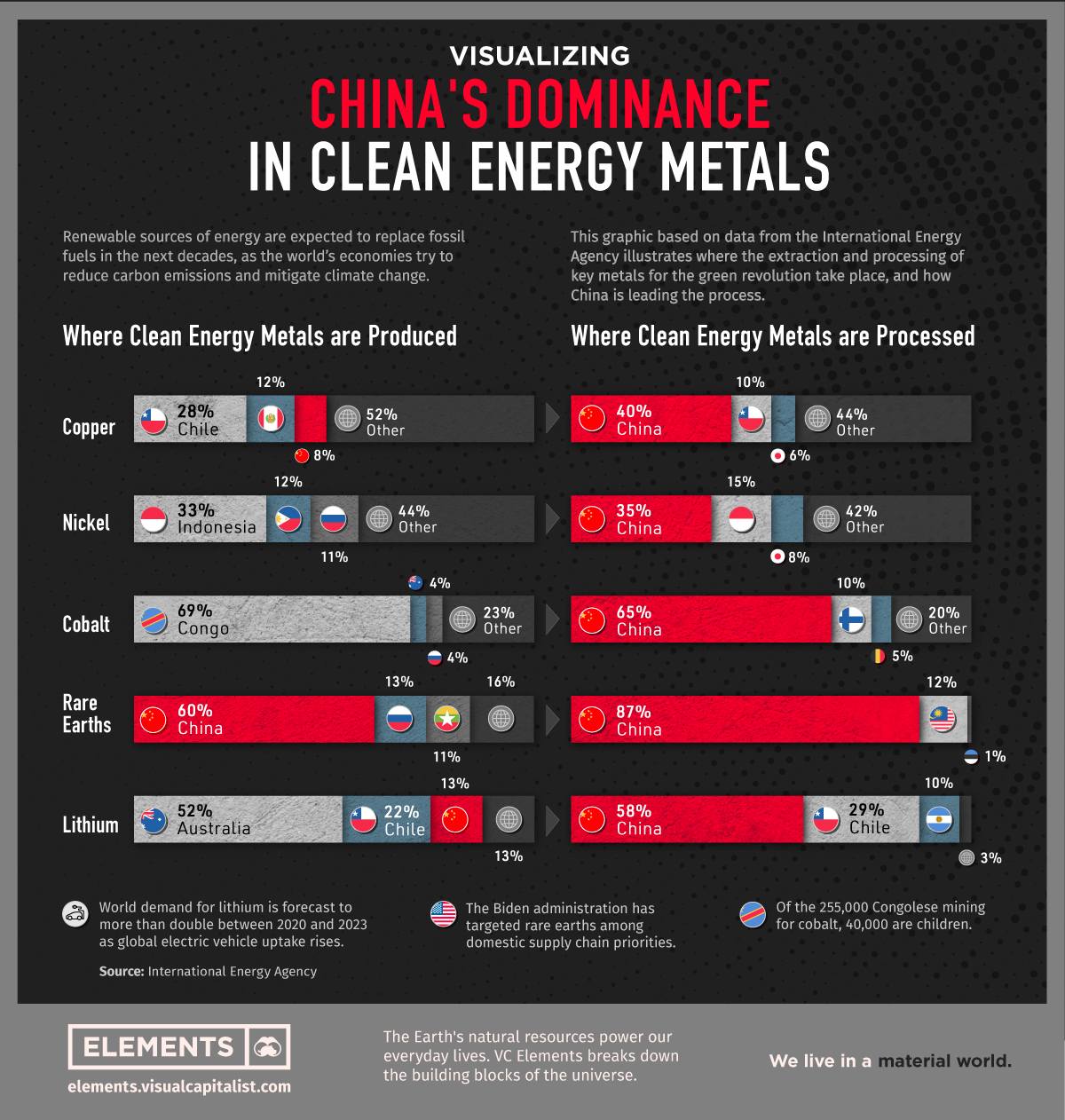The Future Of Electric Motors: Diversifying Beyond China's Dominance

Table of Contents
The Current Landscape: China's Grip on Electric Motor Production
China currently holds a commanding share of the global electric motor market, dominating production and export volumes. This dominance isn't accidental; it's the result of a confluence of factors that have allowed Chinese manufacturers to achieve significant scale and cost advantages.
Several key reasons contribute to China's leading position:
- Massive Production Scale and Low Costs: Chinese manufacturers benefit from economies of scale, producing electric motors at a volume and cost unmatched by competitors in other regions. This allows them to offer highly competitive pricing, a key factor in the global EV market.
- Strong Vertical Integration: China has developed a robust, vertically integrated supply chain for electric motors. This means many companies control various stages of production, from raw materials to final assembly, enhancing efficiency and reducing costs.
- Access to Rare Earth Minerals: The production of many high-performance electric motors relies on rare earth minerals, and China possesses significant reserves and processing capabilities. This access provides a competitive advantage.
- Government Support for EV and Motor Manufacturing: The Chinese government has actively supported the development of its EV and electric motor industries through substantial subsidies, tax breaks, and strategic investment in research and development.
Technological Advancements Driving Diversification
While China currently leads, emerging technologies are empowering other countries to compete more effectively in the electric motor market. Several key innovations are driving this diversification:
- Improved Battery Technology: Advancements in battery technology are leading to higher-efficiency electric motors. Higher energy density batteries mean smaller, lighter, and more efficient motors are possible, reducing reliance on bulky and expensive designs.
- Advancements in Permanent Magnet Materials: Research is focused on developing permanent magnet materials that require fewer or no rare earth elements. This reduces reliance on China's dominance in rare earth mineral processing and supply chains. This includes exploring alternative materials like ferrite magnets and advanced alloys.
- Development of High-Power Density Motors: The development of high-power density motors is crucial for improving vehicle performance, particularly in high-performance EVs and electric trucks. These motors offer greater power output for their size and weight.
This technological evolution is supported by:
- Silicon carbide power modules: These offer increased efficiency and power density compared to traditional silicon-based modules.
- Wireless power transfer technology: This simplifies motor integration and reduces reliance on complex wiring harnesses.
- Advanced motor control algorithms: Sophisticated algorithms optimize motor performance, maximizing efficiency and extending battery life.
Government Policies and Investments Fostering Competition
Recognizing the strategic importance of electric motor technology, governments worldwide are implementing policies to boost domestic production and reduce dependence on China. These initiatives include:
- Subsidies and Tax Breaks: Many countries offer financial incentives to companies investing in electric motor manufacturing and research. These incentives aim to attract investment and stimulate domestic production.
- Research Funding: Governments are increasing funding for research and development in electric motor technologies, fostering innovation and accelerating the development of next-generation motors.
- Protectionist Measures: Some countries are considering or implementing trade policies to protect domestic manufacturers from unfair competition.
Examples of these efforts include:
- The US CHIPS and Science Act: This legislation provides significant funding for semiconductor manufacturing, a crucial component in advanced electric motor controllers.
- The EU's focus on battery and electric vehicle supply chain resilience: The EU is actively working to build a strong and diversified domestic battery and electric vehicle supply chain, including electric motors.
- Government-backed research and development programs: Various countries are investing heavily in research and development programs focused on electric motor technologies, aiming to achieve technological leadership.
The Role of Private Companies in Diversification
Private companies are playing a pivotal role in diversifying electric motor production beyond China. They are making significant investments in:
- New Manufacturing Facilities: Companies are establishing new manufacturing facilities in strategic locations outside of China to secure production capacity and reduce geographical risk.
- Strategic Partnerships: Companies are forming strategic partnerships with raw material suppliers and technology providers to secure access to critical resources and expertise.
- Sustainable and Ethical Sourcing: Companies are increasingly emphasizing sustainable and ethical sourcing practices for raw materials, ensuring responsible sourcing and reducing environmental impact.
Examples include major automotive manufacturers and technology companies investing heavily in electric motor technology and establishing manufacturing bases in various regions globally.
Conclusion
The future of electric motors depends heavily on successful diversification away from China's current dominance. Technological innovation, strategic government policies, and proactive corporate investments are creating a more geographically dispersed and resilient electric motor industry. This shift is essential for enhancing global supply chain security, fostering healthy competition, and ensuring the long-term success of the electric vehicle revolution. To ensure a secure and sustainable future for electric mobility, continued investment in research and development, along with supportive policy frameworks, remains crucial for diversifying electric motor production beyond China’s current leadership. Let's work together to build a more robust and resilient future for electric motors and the broader EV ecosystem.

Featured Posts
-
 Luxury Car Sales In China Challenges Faced By Bmw Porsche And Others
May 05, 2025
Luxury Car Sales In China Challenges Faced By Bmw Porsche And Others
May 05, 2025 -
 Sharp Temperature Rise In South Bengal 38 C Recorded On Holi
May 05, 2025
Sharp Temperature Rise In South Bengal 38 C Recorded On Holi
May 05, 2025 -
 Heatwave Alert In West Bengal Four Districts On High Alert
May 05, 2025
Heatwave Alert In West Bengal Four Districts On High Alert
May 05, 2025 -
 Christian Horners Pithy Comment On Max Verstappens New Life As A Father
May 05, 2025
Christian Horners Pithy Comment On Max Verstappens New Life As A Father
May 05, 2025 -
 West Bengal Issues Heatwave Warning For Four Districts
May 05, 2025
West Bengal Issues Heatwave Warning For Four Districts
May 05, 2025
Latest Posts
-
 Analyzing Fleetwood Macs Latest Chart Success The No New Music Factor
May 05, 2025
Analyzing Fleetwood Macs Latest Chart Success The No New Music Factor
May 05, 2025 -
 Gibonni Intimo Lancio Del Libro Drvo E Annuncio Concerto A Subotica
May 05, 2025
Gibonni Intimo Lancio Del Libro Drvo E Annuncio Concerto A Subotica
May 05, 2025 -
 Fleetwood Macs Most Popular Songs A Look At Their Continued Relevance
May 05, 2025
Fleetwood Macs Most Popular Songs A Look At Their Continued Relevance
May 05, 2025 -
 Fleetwood Macs Hit Album A Chart Phenomenon Explained
May 05, 2025
Fleetwood Macs Hit Album A Chart Phenomenon Explained
May 05, 2025 -
 The Day Peter Green Created Fleetwood Mac The Genesis Of Albatross And 96 1 The Rocket
May 05, 2025
The Day Peter Green Created Fleetwood Mac The Genesis Of Albatross And 96 1 The Rocket
May 05, 2025
